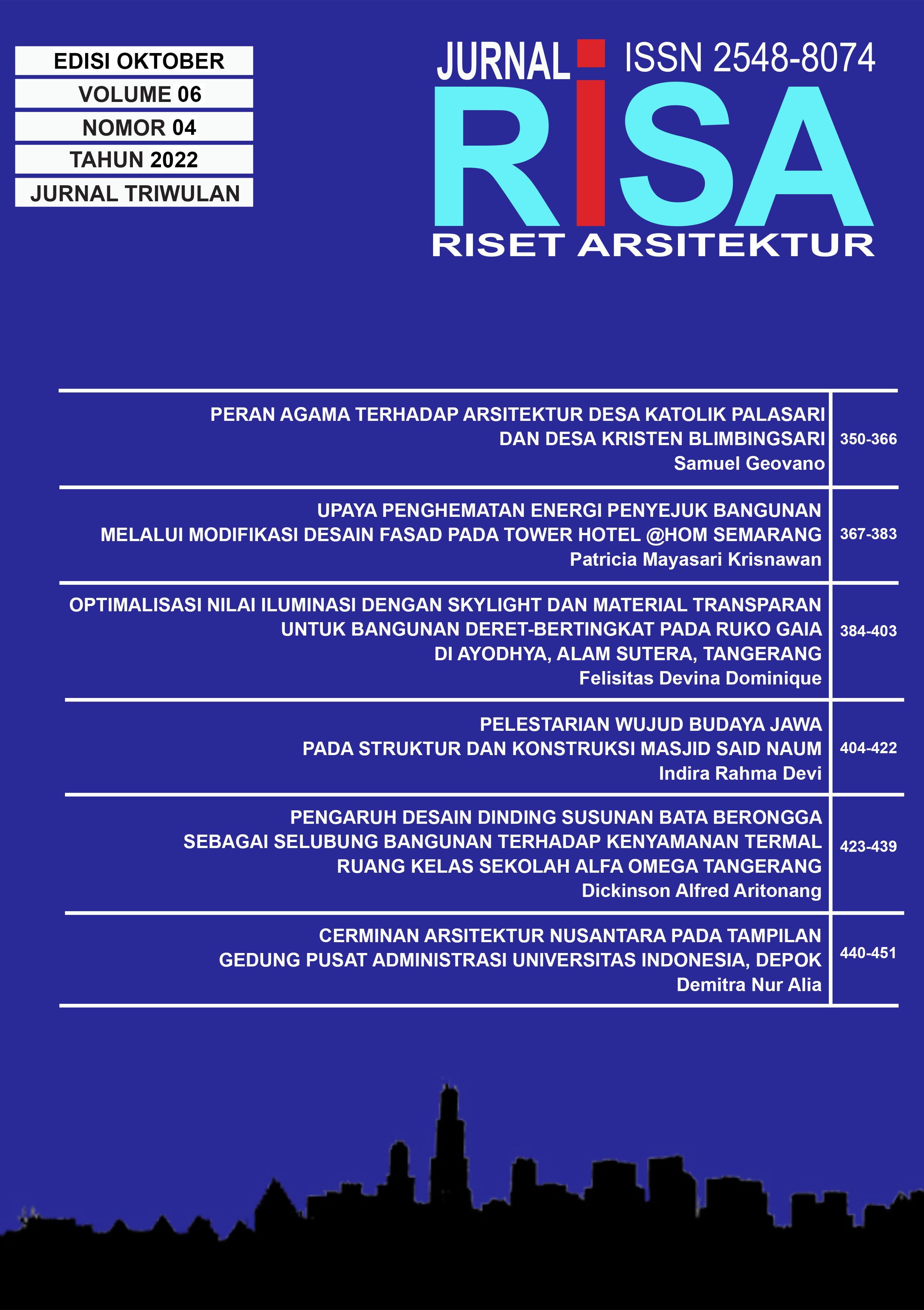THE REFLECTION OF NUSANTARA ARCHITECTURE IN THE CENTRAL ADMINISTRATION BUILDING APPEARANCE, DEPOK
DOI:
https://doi.org/10.26593/risa.v6i04.6152.440-451Abstract
Abstract - Nusantara architecture is a knowledge passed down from generation to generation in the matter of designing space, in accordance with geoclimatic conditions, which embodies diversity from Sabang to Merauke. Nusantara architecture can be classified as an element of culture in the realm of architectural knowledge. Without realizing it, the essence of the Nusantara Architecture knowledge will always be embedded in Nusantara society, like an identity. The track record of Nusantara Architecture is recorded in the oral society, where stories and objects become the medium used to record and trace the knowledge of Nusantara Architecture. The absence of a written track record gives the impression that Nusantara Architecture has sunk.
One of the records of Nusantara Architecture that can be found to this day is the Nusantara Temple, which is iconic and monumental. Temples holds importance and virtue that exceeds other buildings. The brilliance of the architecture of temples can illustrate how rich the culture, civilization, and architecture in the Nusantara. Apart from accommodating certain functions and activities, temples can also be used as a means of expressing Nusantara culture.
Nusantara architecture is often regarded as something ancient and out of date. The influence of Western architecture was more easily accepted by the people of the Nusantara, thus encouraging a fusion of culture that faded the touch of Nusantara in Indonesian architecture, resulting in a shift in spatial structure, appearance of form and appearance, to scale and proportion. The current Nusantara Architecture should grow, transform, become global, but still holds strength that comes from the local context.
The study aims to examine the concepts of Nusantara Architecture of the object of study, which is an educational building built in the modern era. The research method used is qualitative-descriptive, and is carried out through colleting data, which goes hand in hand with supporting literature studies. In this study, the main theory used is the Nusantara Architecture Theory by Prof. Josef Prijotomo, who was later assisted by the method of Temple Elements. Comparison with the temple will be used as a tool to analyze the object of study, the Central Administration Building of University of Indonesia.
Based on this research, it can be concluded that the Central Administration Building of University of Indonesia has the temple elements in its architecture, which includes twelve elements, namely hierarchy, axis, divison of three, geometric composition, rhythm and repetition, perspective effect, symmetry, mimetic, composition, solids-voids, textures – line elements – dark/light effects, biomimetic ornaments, and materials. By fulfilling the temple elements, it can be stated that the Central Administration Building of University of Indonesia reflects the Nusantara Architecture, through a process of transformation with a touch of modern architecture.
Keywords: Nusantara Architecture, Temple, Appearance, Universitas Indonesia Administrative Center Building
Additional Files
Published
Issue
Section
License
Copyright (c) 2022 Demitra Nur Alia

This work is licensed under a Creative Commons Attribution-NonCommercial-ShareAlike 4.0 International License.












